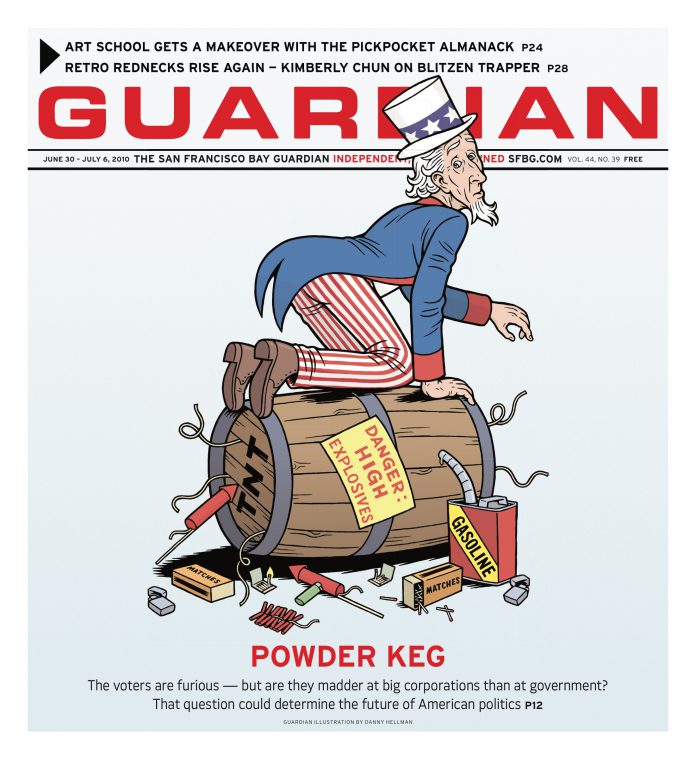There’s a mysterious paradox present in the fact the Golden Gate Bridge was essentially born in the pit of the Great Depression. On the one hand, this marvel of architecture and beauty stands for potential and optimism as made manifest in the dreamiest haven of California. On the other, the Golden Gate is like a metallic siren, known as a place where those who have lost contact with American life go to disappear.
In Golden Gate: The Life and Times of America’s Greatest Bridge (Bloomsbury Press, 224 pages, $23) the esteemed historian and state librarian emeritus Kevin Starr focuses on the positive side of the landmark, even if he notes tragedies such as the deaths of ten workers near the final days of the bridge’s construction. Starr isn’t seduced by the romantic or melancholic image of the fog-shrouded structure so much as committed to celebrate — with great acumen and an oft-oratorial voice that unites broad yet vital references in a turn of phrase — its greatness. His book is as well-ordered and constructed as its subject, with cleanly presented chapters outlining the bridge’s relationship to subjects such as politics, money, and design, saving the more ambiguous — yet also perhaps richest? — areas of suicide and art for last.
As such, Golden Gate is complimentary to Donald MacDonald and Ira Nadel’s more illustrative, text-based 2008 tome Golden Gate Bridge: History and Design of an Icon (Chronicle Books, 144 pages, $16.95), a well-designed hardcover with a cover that pays homage to the International Orange color of the bridge itself. Another recent book that pairs off and contrasts well with Scharff’s is Gary Snyder and Tom Killion’s Tamalpais Walking: Poetry, History and Prints (Heyday Books, 160 pages, $50), in the sense that Starr, ever mindful of context, is keenly attuned to the bridge’s role in connecting nature and urbanity in Northern California. In the latter stretch of the book, he takes time to explore the contested role of BART in relation to the bridge.
In the “Art” chapter of Golden Gate, Starr makes cursory mention of the scene in Alfred Hitchcock’s 1958 Vertigo in which Kim Novak hurls herself into the water at the foot of the Golden Gate Bridge. Anyone who visits this cinematic landmark, whether alone or on a group tour, will discover that after Sept. 11, 2001, it has been fenced off. So, while safeguarding against real-life suicides has not (at least yet) resulted in overt changes to the look and structure of the bridge, the possibility of terrorist attack has led to some tiny degree of visual blight near it. It’s curious, and contradictory, and the type of detail — complete with the added twist that a hole ripped into the metal fence allows for good photography — that Starr might enjoy. He isn’t interested in singing the praises of the bridge’s famous creators, such as Joseph B. Strauss, as he is in demonstrating the meaning of their accomplishments. Trains and boats if not airplanes brought us the Golden Gate Bridge, and Scharff shows why its Art Deco subtle majesty — those paradoxes again — is here to stay.
KEVIN STARR: GOLDEN GATE
July 8, 6 p.m., $7–$12
Commonwealth Club
595 Market, SF
(415) 597-6700
July 13, 7 p.m., free
Bookshop West Portal
80 West Portal, SF
(415) 564-8080
July 14, 7 p.m., free
Books Inc.
2251 Chestnut, SF
(415) 931-3633
July 15, 6 p.m.
California Historical Society
678 Mission, SF
(415) 357-1848

